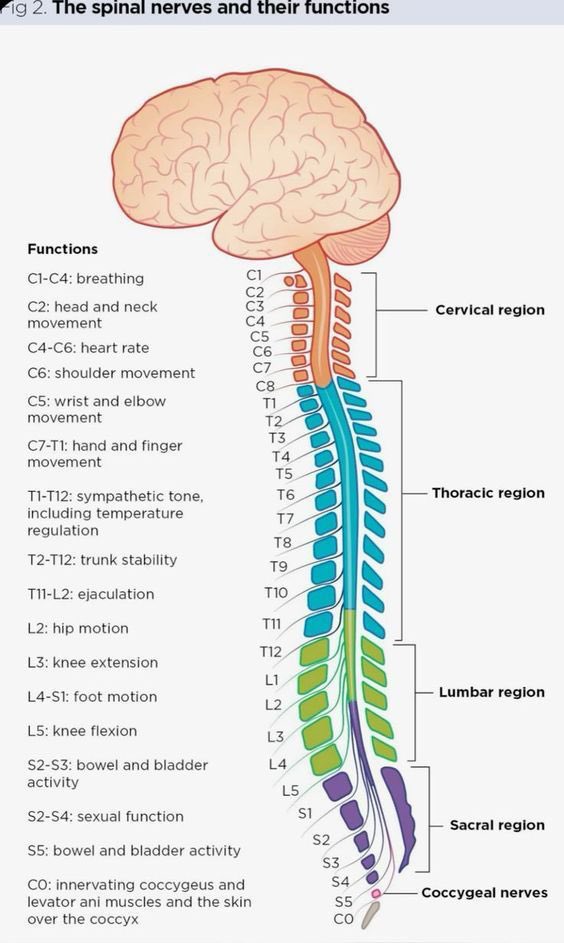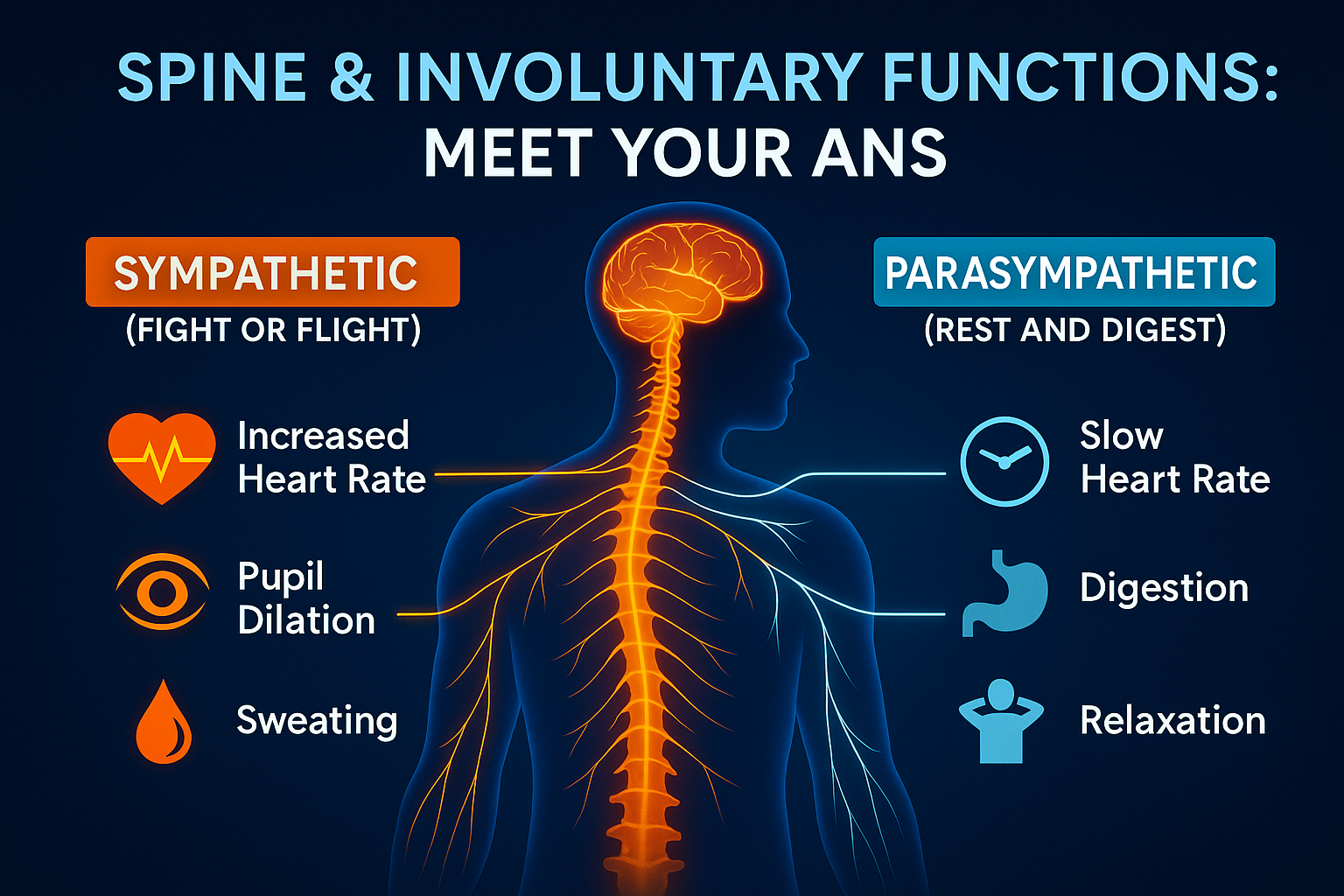
Introduction: Beyond Bones—Your Spine as the Lifeline of Communication
When we hear the word “spine,” many of us think of posture, back pain, or the skeletal structure that keeps us standing tall. But the spine is much more than just a stack of bones; it’s the superhighway for one of the most intricate and essential systems in your body—the nervous system. Every blink, breath, heartbeat, and reflex you experience is part of a complex web of communication orchestrated by your brain and delivered via your spinal cord. It’s easy to overlook this connection until something goes wrong—like a pinched nerve or slipped disc—and suddenly, even the simplest tasks become challenging.
At the heart of this neural orchestra lies the spinal cord, shielded and supported by the spine. It functions as the main transmission line, linking your brain to nearly every part of your body. Whether it’s the joy of feeling a hug, the instinct to pull your hand away from a hot pan, or the coordination required to walk, it all traces back to this central communication channel. The integrity of this system depends heavily on the health of your spine.
What many people don’t realize is that spinal health can influence far more than just physical movement. From digestive issues and fatigue to chronic headaches and reduced immunity, spinal problems can ripple through the body in surprising ways. This is because the spine not only protects the spinal cord but also serves as the command center for both voluntary and involuntary functions governed by the nervous system. Understanding this relationship isn’t just useful for doctors or chiropractors—it’s a key insight for anyone who wants to lead a healthy, active life.
In this blog, we’ll explore the intimate relationship between your spine and your nervous system, understand what happens when things go wrong, and share practical lifestyle tips to help you maintain optimal spinal health. Because when your spine is aligned, your whole body is in sync.
The Anatomy of the Connection: How the Spine Supports the Nervous System

The human spine is made up of 33 vertebrae grouped into five regions—cervical, thoracic, lumbar, sacral, and coccygeal. Nestled safely within this protective column lies the spinal cord, a thick bundle of nerves extending from the brainstem down through the vertebral column. This is the core of the central nervous system (CNS), where messages travel at lightning speed to and from the brain.
Emerging from between the vertebrae are 31 pairs of spinal nerves that branch out to serve every part of your body—from your fingertips to your toes. These nerves carry out two essential jobs: transmitting commands from the brain to your muscles and organs, and bringing sensory information (like pain, temperature, and touch) back to your brain for interpretation.
Spinal Cord: The Nervous System's Expressway
Think of your spinal cord as a multi-lane expressway, with nerves zipping up and down, transmitting critical information every millisecond. When you decide to lift your arm or feel the texture of your sweater, those messages must pass through the spine. Any disruption—be it physical injury, inflammation, or misalignment—can slow or even block these messages, leading to symptoms like numbness, weakness, or chronic pain.
This is why spinal injuries are so serious. Even a small compression on a nerve root due to a herniated disc or spinal misalignment can lead to severe neurological symptoms, such as sciatica or loss of motor control. And in the case of major trauma, damage to the spinal cord can result in paralysis or loss of organ function below the injury level.
Not All Messages Go Through the Brain—Reflexes Explained
One fascinating feature of the spinal cord is its ability to handle certain actions independently through reflex arcs. These are automatic responses that don’t require brain input. A classic example is the knee-jerk reflex at the doctor’s office, or the rapid withdrawal of your hand after touching something hot. These shortcuts allow the body to respond quickly to danger, minimizing harm while the brain catches up.
When the Spine Struggles: Neurological Consequences
Poor spinal health can manifest in many forms. Some of the most common issues include:
- Herniated Discs: Bulging or ruptured discs can press on nearby nerves, leading to pain, tingling, and muscle weakness.
- Spinal Stenosis: Narrowing of the spinal canal can compress nerves and cause mobility issues.
- Scoliosis or Abnormal Curvature: Misalignment alters nerve pathways and impacts how signals are transmitted.
- Trauma: Accidents and falls can damage vertebrae or the spinal cord, sometimes irreversibly.
- Degenerative Diseases: Conditions like multiple sclerosis or spinal muscular atrophy can be aggravated by poor spinal care.
The Autonomic Nervous System: Involuntary Functions at Risk

Your spine also plays a crucial role in regulating involuntary bodily functions through the Autonomic Nervous System (ANS), which controls heart rate, digestion, respiration, and more. This system has two branches:
- Sympathetic Nervous System (“Fight or Flight”): Originates in the thoracic and lumbar spine; helps your body respond to stress.
- Parasympathetic Nervous System (“Rest and Digest”): Arises from the brainstem and sacral spine; keeps your body calm and stable.
Issues in these spinal regions can cause everything from gastrointestinal problems to poor sleep and increased anxiety.
Protecting Your Spine = Protecting Your Nervous System
Spinal health doesn’t just happen by chance—it’s something you have to actively work toward. Here are some practical tips:
- Stay Active: Regular exercise helps maintain spine-supporting muscles and improves blood flow to the spinal cord.
- Mind Your Posture: Keep your head aligned, shoulders relaxed, and lower back supported, especially when sitting for long periods.
- Lift With Care: Avoid lifting heavy objects with your back. Use your legs instead and keep objects close to your body.
- Sleep Smart: Use a supportive mattress and pillow to maintain your spine’s natural curve.
- Stay Hydrated: Your spinal discs are mostly water, and staying hydrated helps them stay elastic and functional.
- Stretch Daily: Especially your back, neck, and hips to maintain flexibility and prevent nerve compression.
- Seek Professional Help: Don’t ignore persistent pain, tingling, or mobility issues. Early intervention can prevent serious damage.
Conclusion: A Healthy Spine is a Healthy Life
Your spine is the foundation of your body and the gateway to your nervous system. It doesn’t just hold you up—it keeps you going. Every signal your brain sends, every sensation you feel, and every heartbeat, breath, or reflex you experience flows through this incredible structure. When your spine is misaligned or damaged, the consequences are not limited to back pain—they can ripple through your entire nervous system and impact your quality of life in unexpected ways.
Yet, the good news is that many spinal issues are preventable or manageable through mindful living. Simple habits like good posture, staying physically active, sleeping well, and listening to your body can go a long way in protecting your spine—and by extension, your nervous system. Technology and medical advances are also providing new ways to address spinal and neurological conditions, offering hope and healing to those affected.
By understanding the vital role your spine plays in nervous system function, you’re better equipped to make informed decisions about your health. Prioritize your spinal health today, because when your spine is in harmony, your whole body works better—and life just feels more balanced.